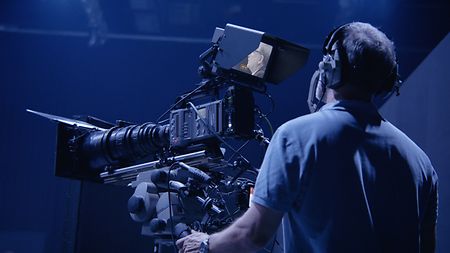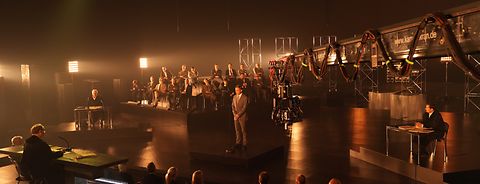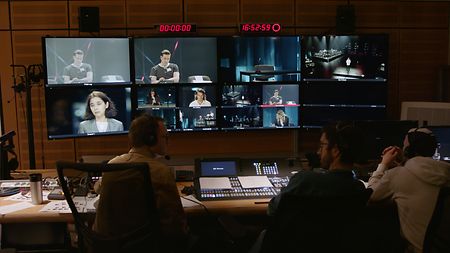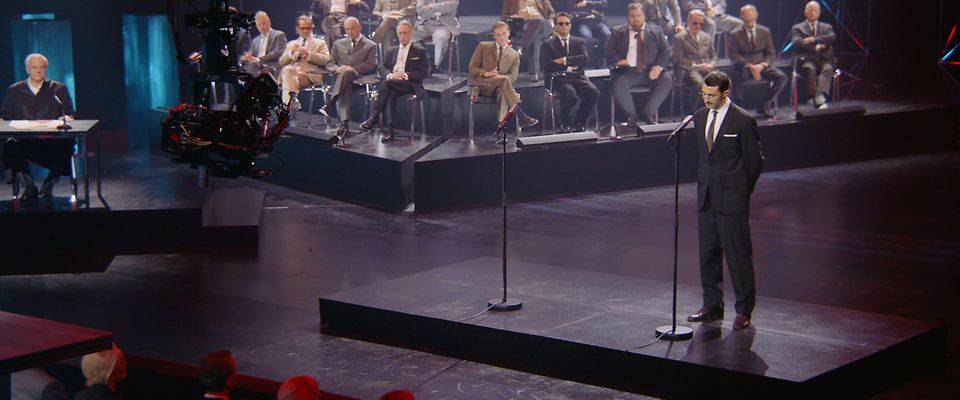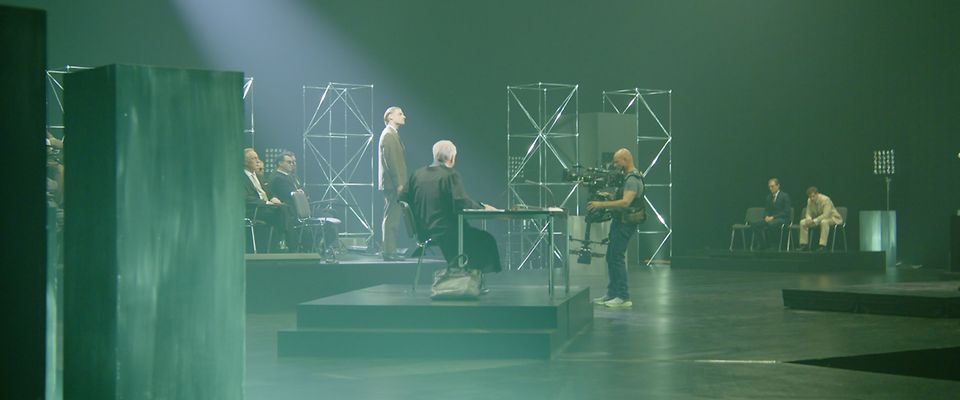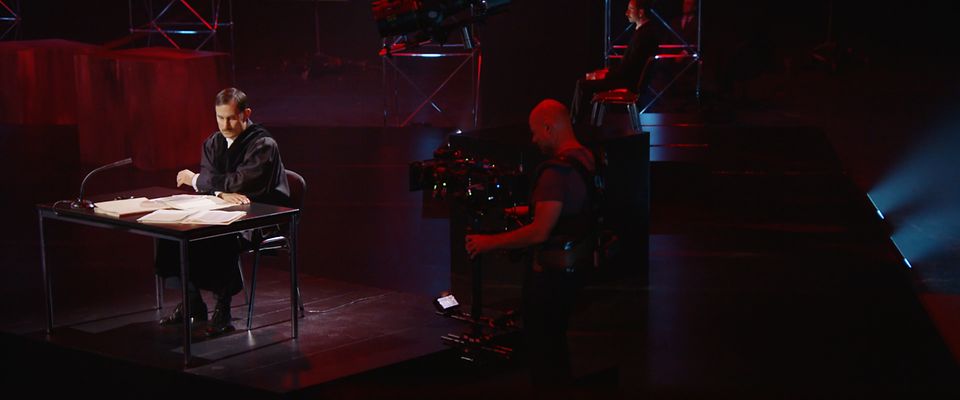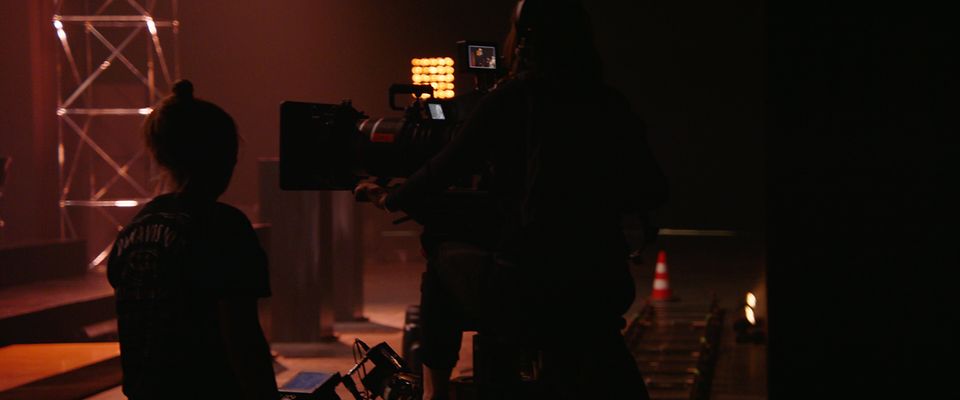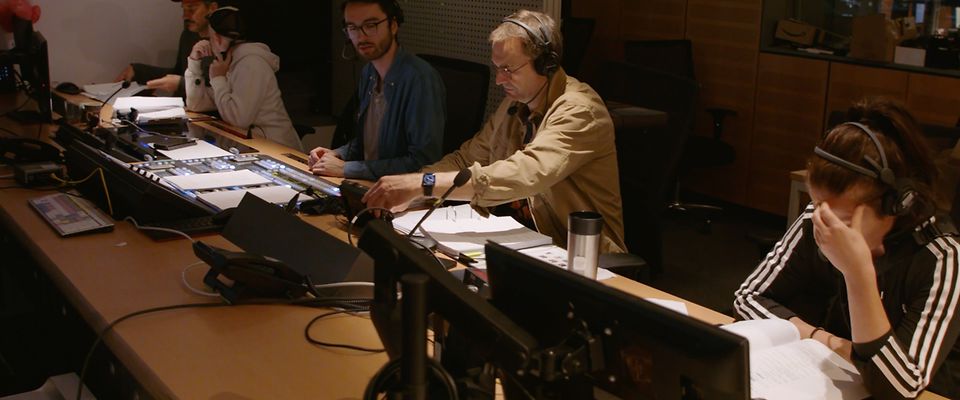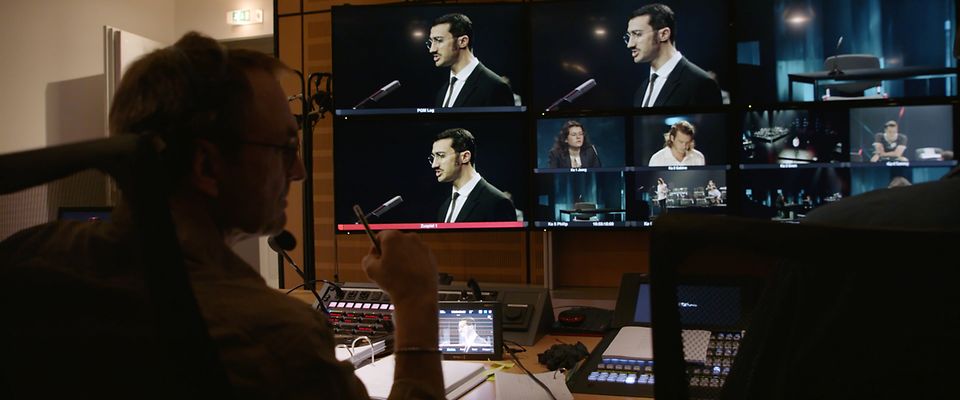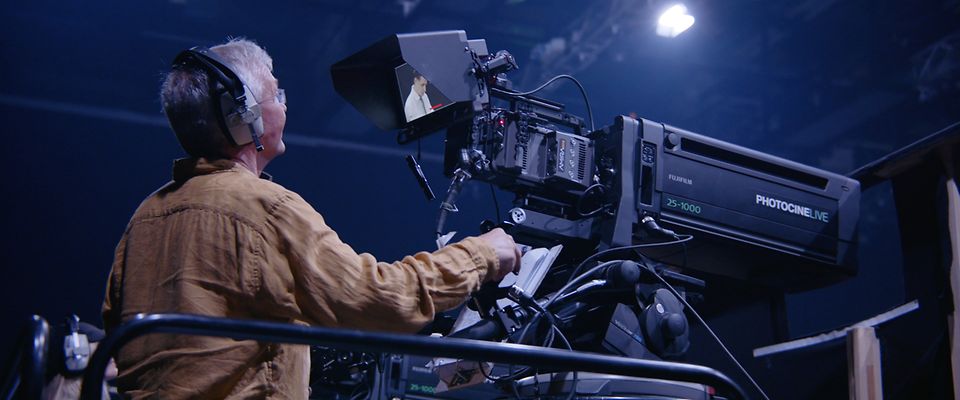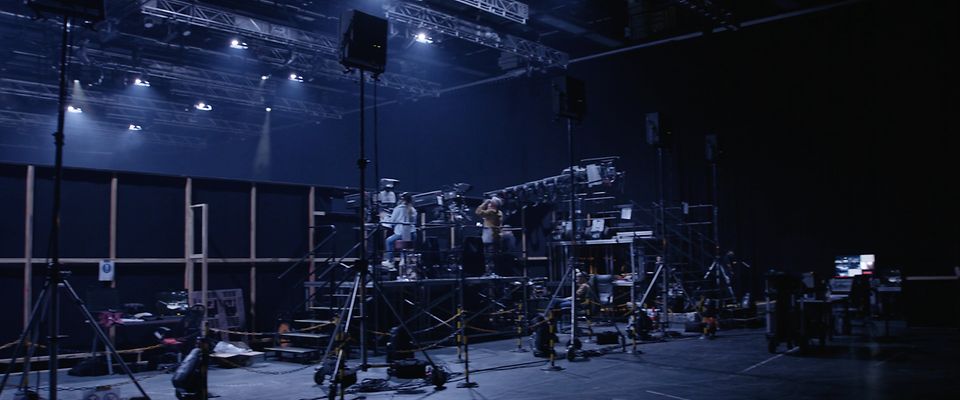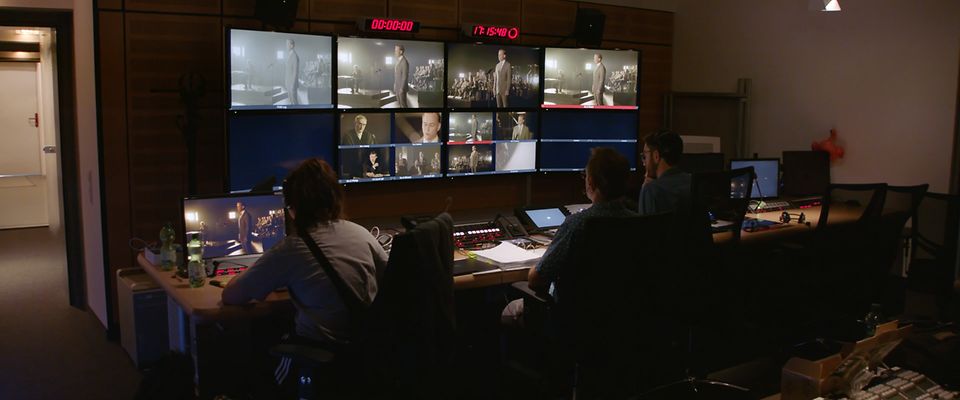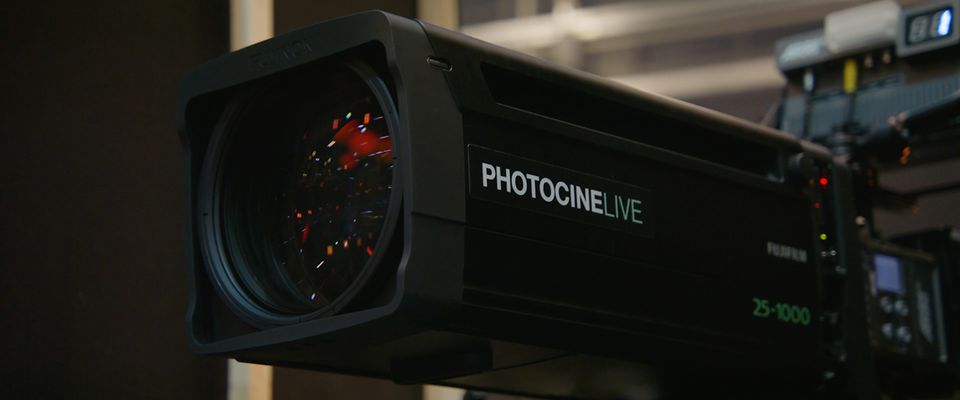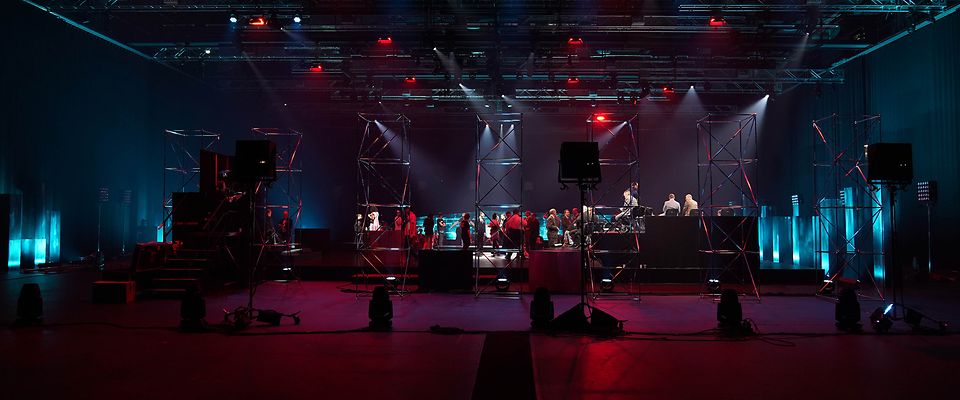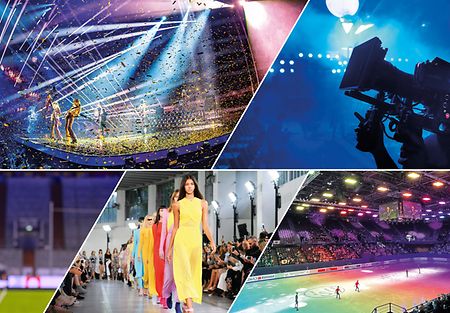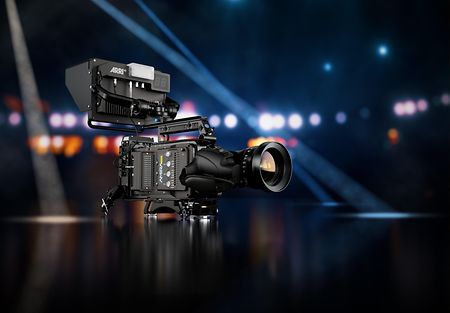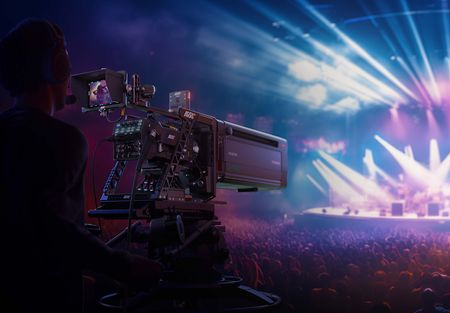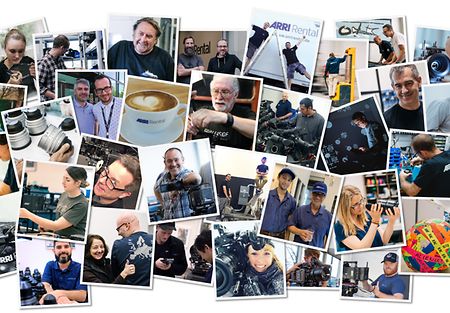Mr. Frenzel, what conversations did you have with RP Kahl about how to approach the shoot?
When the producer Alexander Van Dülmen first contacted me, it quickly became clear that this project would be a hybrid of different production methods, with elements of cinema, theater, and broadcast television. Our production team had an intriguing mix of professional backgrounds. Director RP Kahl mainly comes from cinema, our production designer Nina Peller often works in theater, and our costume designer Tina Kloempken has extensive experience in opera. My own background is a mix of cinema and multi-camera live TV productions. When I discussed the project with RP Kahl we decided on a “live-to-tape” approach, filming on a TV soundstage at Studio Berlin with multiple cameras and 360-degree coverage of the action.
How did you decide on the look of the film? What were your references?
The design of the set was more an abstraction of a courtroom, since we wanted to stay away from a historical depiction of the trials, as you would see in a period piece. There are some subtle hints of the 1960s through the choice of wardrobe, but generally it was more of a timeless space, which in my opinion makes it more relevant to the now. We tried to bring in a subtle fluidity to the very static setup of a courtroom by using four mobile cameras that added some movement: a Steadicam, a Technocrane, a dolly camera, and a movable PED cam (pedestal camera) to get different angles.
In terms of lighting, we relied on automated fixtures used for live TV shows, theatrical performances, and concerts. We worked with our lighting designer Peer Langemak to create different moods for each chapter and occasionally dynamic light changes during a scene as well. As far as references go, we looked at Gerhard Richter’s Birkenau paintings, which are a good starting point for exploring how to approach any artistic representation of something as horrific as the Holocaust. For me personally, Jacob Ihre’s use of what I would call “unpleasant” color on the HBO miniseries “Chernobyl” was something I kept circling back to.
